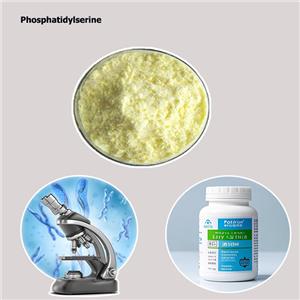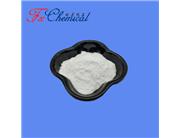Phthosphatidylserine (PS) is a crucial phospholipid, a type of fat molecule that is a fundamental building block of cell membranes in all animals and plants. Here's a breakdown of its key aspects:
Chemical Structure:
Like other phospholipids, it has a glycerol backbone.
Attached to this backbone are two fatty acid chains (which can be saturated or unsaturated, varying in length).
Attached to the third position is a phosphate group.
Critically, attached to that phosphate group is the amino acid serine. This serine head group gives PS its name and unique properties, including a net negative charge.
Location in the Cell Membrane:
PS is distributed asymmetrically. In healthy, living cells, it's found almost exclusively on the inner (cytoplasmic) leaflet of the plasma membrane (the side facing the inside of the cell).
This asymmetry is actively maintained by specific enzymes (flippases and floppases). It's crucial for normal cell function.
Key Functions:
Apoptosis (Programmed Cell Death): This is one of its most vital roles. When a cell is destined to die, enzymes called scramblases rapidly disrupt the asymmetry, exposing PS on the outer leaflet of the membrane. This acts as a powerful "eat me" signal to phagocytes (immune cells like macrophages), which recognize the exposed PS and engulf the dying cell cleanly without causing inflammation.
Blood Clotting: PS exposed on the surface of activated platelets provides a critical catalytic surface for the assembly of complexes involved in the blood coagulation cascade.
Activation of Protein Kinase C (PKC): PS plays a key role in activating this important enzyme family involved in numerous signaling pathways regulating cell growth, differentiation, and survival.
Cell Signaling:
Membrane Integrity and Fluidity: Along with other phospholipids, PS contributes to the structural integrity and fluidity of the cell membrane.
Membrane Protein Function: PS helps anchor and regulate the activity of certain proteins embedded in the membrane.
Neurotransmitter Release: In nerve cells (neurons), PS is involved in the fusion of synaptic vesicles with the presynaptic membrane, facilitating the release of neurotransmitters.
PS as a Supplement:
PS supplements (often derived from soy or cabbage due to past concerns about bovine sources and mad cow disease) are widely marketed, primarily for cognitive support.
The European Food Safety Authority (EFSA) has approved a health claim stating that "Phosphatidylserine contributes to normal cognitive function" for older adults (specifically, at least 200mg PS from soy per day).
Research suggests potential benefits for memory, attention, mood, and stress response in aging populations, though results are sometimes mixed and more robust long-term studies are needed.
It's also studied for potential benefits in athletic performance (reducing exercise-induced stress, improving recovery).
In Summary:
Phosphatidylserine is an essential negatively charged phospholipid primarily located on the inner leaflet of the cell membrane. Its most critical biological functions involve cell signaling, particularly marking cells for programmed death (apoptosis), aiding in blood clotting, and activating key enzymes like PKC. Its asymmetric distribution is vital for these roles. Due to its importance in neuronal membranes and signaling, PS supplements are popular for supporting cognitive function, especially in older adults.


 China
China

